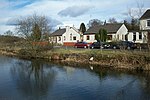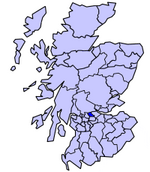Cumbernauld, Kilsyth and Kirkintilloch East (UK Parliament constituency)

Cumbernauld, Kilsyth and Kirkintilloch East is a constituency of the House of Commons of the Parliament of the United Kingdom. It was created for the 2005 general election, replacing Cumbernauld and Kilsyth and part of Strathkelvin and Bearsden. The constituency covers the north of the North Lanarkshire council area, and small eastern and northern part of the East Dunbartonshire council area. It is currently represented by Stuart McDonald of the Scottish National Party, who overturned a Labour majority of nearly 14,000 to take 59.9% of the vote in the May 2015 general election. With 38 letters (plus one comma and four spaces), Cumbernauld, Kilsyth and Kirkintilloch East has the longest constituency name in the current Parliament. Under the 2023 Periodic Review of Westminster constituencies the Boundary Commission for Scotland recommended the constituency to be renamed Cumbernauld and Kirkintilloch, despite the fact that the constituency under the new boundaries still contains Kilsyth and still only covers the eastern half of Kirkintilloch.
Excerpt from the Wikipedia article Cumbernauld, Kilsyth and Kirkintilloch East (UK Parliament constituency) (License: CC BY-SA 3.0, Authors, Images).Cumbernauld, Kilsyth and Kirkintilloch East (UK Parliament constituency)
Geographical coordinates (GPS) Address Nearby Places Show on map
Geographical coordinates (GPS)
| Latitude | Longitude |
|---|---|
| N 55.957 ° | E -4.038 ° |
Address
G65 9HY , Smithstone
Scotland, United Kingdom
Open on Google Maps











